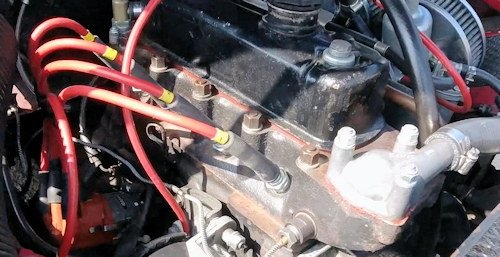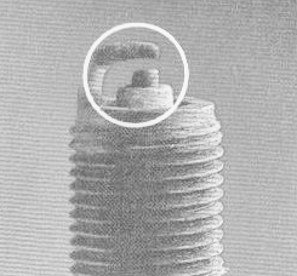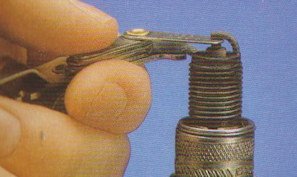Simple spark plug service

Does engine idle smoothly and fire on all cylinders? Do the plugs have clean insulators?
Keeping your spark plugs in peak condition will help your car to start more easily, run better and use less fuel at the same time.Spark plugs are among the most vital parts of the ignition system. condition and adjustment affect both performance and Econorny.
Although they look simple in construction, they are do an assigned job to work in direct Contact with the extreme temperatures and pressures with the engine's combustion.
When to do this job
The constant passage of high voltage electrical energy across the gap between the two electrodes gradually erodes away the metal and so the gap enlarges.So, you should replace or replace the plugs and adjust the gaps every 5,000 miles (8,000 km). Standard spark plugs must be changed every 10,000 miles though the new modern, and platinum cored types have a longer life.
Points to watch Spark plugs are only as good as the leads that supply them with electricity. Renew them if you get poor starting after fitting new plugs.
What this job involves
- Tools: Plug spanner; plug gapping tool; feeler gauges; contact file
- New set of spark plugs
- Removing spark plugs
- Cleaning spark plug tips
- Adjusting spark plug gaps
- Replacing spark plugs
Replace Spark Plugs
You must have a plug spanner to unscrew the spark plugs from the cylinder head Most plugs need a 14 mm or a smaller 10 mm plug spanner check what size you have before buying a plug spanner. The best ones have a rubber insert to grip and protect the ceramic plug body
On some cars access to some spark plugs is extremely difficult because one end is under a bulkhead or some other components. To reach this plug you Will need a plug spanner made specifically for your car.
Before pulling off the plug connector caps, label each plug's high-tension lead with its cylinder number so that it can be replaced correctly.
- Pull off the plug caps always pull the cap itself, not the plug lead
- Push the plug spanner firmly on to the first plug and unscrew it.
Use a brush or vacuum cleaner to clean out any dirt or flakes of corrosion from around the plug hole to prevent them from falling inside the cylinder when the plug is out
Some cars have a particularly deep plug recess where a brush will not go — either blow out the dirt or use a vacuum cleaner to remove it.Unscrew the plug completely and repeat. Bear in mind that if the engine is still hot, the plugs will be too
Note: Do not use too much force if spark plug is stubborn or may have been cross-threaded.use a steel extension handle on the plug spanner but take the car garage which will have tools and experience to remove over tightened or corroded plugs.

Clean spark plugs
Never use a hard wire brush on the tip of the plug because the bristles can leave conductive tracks of metal across the centre electrode insulator.
But a wire brush can be used to remove any dirt from the screw threads of the plug. Wipe off any dust or oil on the ceramic insulator body.
Next. use the contact file to clean the tip of the central electrode and the inside face of the side electrode.If the file will not fit between the electrodes, use the lever notch on the gapping tool to bend back the side electrode slightly
File the surfaces of the electrodes until they are clean and flat — be careful to keep the file level while you are using it.
Rare or Classic car plugs that are hard to obtain that are Badly blackened or those with hard deposits can be cleaned by grit blasting
spark plugs colour
The colour and condition of each spark plug if the engine is well tuned, they should be the same light biscuity brown colour
Plugs Of a significantly different appearance are a sign of a problem needing further investigation,You may have a leak between the inlet manifold and the head or a valve may be at fault.
Marked rounding of the centre electrode together with pitting of the side electrode means that the plug should bediscarded. It is not a good idea to renew just one plug always fit a whole new set.

spark plugs gap
Most spark plugs have a gap of 0.6mm to 0.9 mm but check for your car. Use your feeler gauge thickness to get the correct size once it is fitted You can adjust the gap by bending the side of the electrode.
If the gap is too narrow, bend back the side electrode with the lever notch on the gapping tool. If the gap is too wide, tap the side electrode gently with a spanner of flat surface so that it moves closer. to the central electrode.
Note: Always check that new spark plugs have the right gap before fitting.


